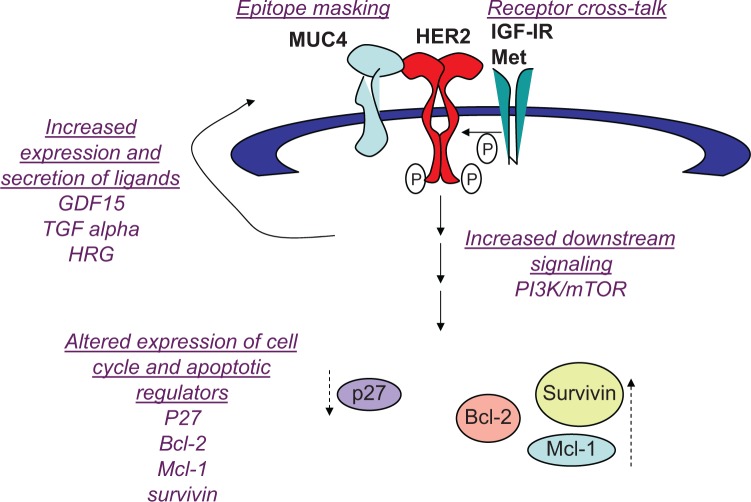Figure 2.
Mechanisms of resistance to trastuzumab: (1) epitope masking, such that a cell surface molecule (MUC4) hides the epitope to which trastuzumab binds, preventing recognition and binding of human epidermal growth factor receptor 2 (HER2) by trastuzumab; (2) receptor cross talk, where cell surface receptor kinase such as insulin-like growth factor 1 receptor (IGF-IR) and Met stimulate activation of HER2 signaling; (3) increased expression and secretion of ligands that activate HER2 signaling, including growth differentiation factor 15 (GDF15), transforming growth factor (TGF) alpha, and heregulin (HRG); (4) increased phosphatidylinositol-3 kinase (PI3K)/mammalian target of rapamycin (mTOR) signaling; (5) reduced expression of G1 arrest mediator p27Kip1 (a cyclin-dependent kinase inhibitor), and increased expression of apoptotic inhibitors B-cell lymphoma 2 (Bcl-2), myeloid cell leukemia sequence 1 (Mcl-1), and survivin.

